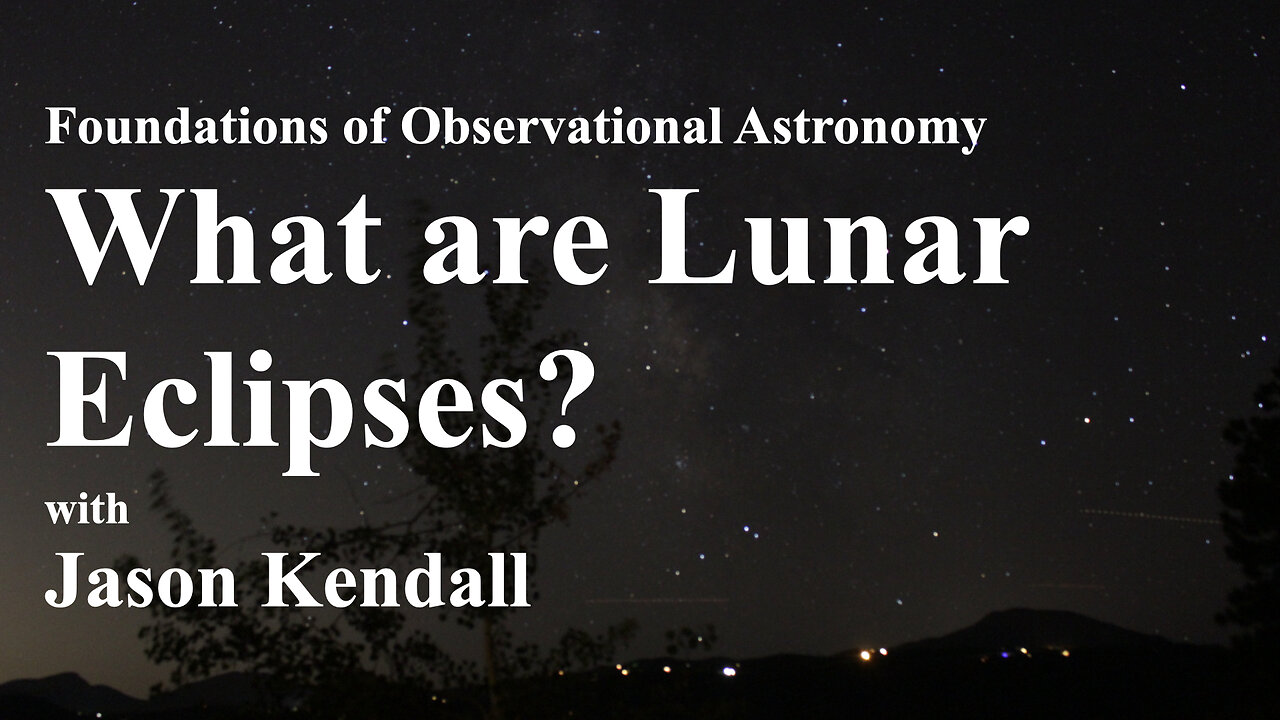Premium Only Content

The Phenomenon of Lunar Eclipses: Understanding Celestial Alignments
In this session, I am pleased to explore the fascinating topic of lunar eclipses and the mechanisms that govern their occurrence. On October 8, 2014, I had the opportunity to capture a total lunar eclipse from northern Manhattan, an experience that deepened my appreciation for these celestial events. During a lunar eclipse, the moon traverses into the Earth’s shadow, a process that is distinct from the moon’s regular phases. Lunar eclipses can be classified into three primary types: penumbral, partial, and total. A penumbral eclipse involves only a partial dimming of the moon, while a partial lunar eclipse occurs when the moon passes through the Earth’s partial shadow, known as the penumbra. A total lunar eclipse, on the other hand, transpires when the moon completely enters the Earth’s umbra, the innermost and darkest part of its shadow. This phenomenon results in a striking deep red appearance, often referred to as a “blood moon.” The red hue is a consequence of the Earth’s atmosphere scattering blue light while allowing red light to pass through, thus illuminating the moon. It is important to note that lunar eclipses do not occur every month. This is primarily due to the moon’s orbit being tilted approximately 5 degrees relative to the Earth’s orbit around the sun. Eclipses are contingent upon the alignment of the Earth, moon, and sun, which only occurs during specific periods known as eclipse seasons. These seasons arise when the line of nodes, where the moon’s orbit intersects the ecliptic, aligns with the sun. Due to the precession of the line of nodes, we can observe up to three lunar eclipse seasons each year, with a complete cycle spanning approximately 18.6 years. Throughout my experiences, I have captured several lunar eclipses, including a notable event on September 27, 1996, during an intermission of a Broadway show, and another on September 27, 2015. Each of these eclipses showcased the moon’s enchanting red color, creating a spectacular view for all who were fortunate enough to observe it. A thorough understanding of the mechanisms underlying lunar eclipses—including the moon’s tilt and the precise alignment of the Earth, sun, and moon—enables us to fully appreciate the beauty and complexity of these celestial events.
-
 15:40
15:40
Robbi On The Record
23 hours agoThe Truth About Your Fitness Tracker
7.44K5 -
 LIVE
LIVE
The White House
3 hours agoPresident Trump Signs Executive Orders, Sep. 19, 2025
1,906 watching -
 LIVE
LIVE
LFA TV
18 hours agoBREAKING NEWS ON LFA TV! | FRIDAY 9/19/25
1,279 watching -
 14:37
14:37
Bearing
9 hours agoHasan Piker on Charlie Kirk’s “Dangerous Ideas” 💥 Just a LARPER Bro 😂
4.54K16 -
 1:31:13
1:31:13
The Quartering
4 hours agoColbert Rages Over Kimmel, Antifa Attacks Charlie Kirk Vigil & Raja Jackson Arrested Finally
161K65 -
 LIVE
LIVE
Dr Disrespect
6 hours ago🔴LIVE - DR DISRESPECT - SUPER ENTERTAINMENT POWER
1,155 watching -
![MAHA News [9.19] McDonalds & Tyson Get Healthier, Big Pharma Ads, CDC Updates Vax Sched](https://1a-1791.com/video/fww1/5d/s8/1/4/u/s/j/4usjz.0kob-small-MAHA-News-9.19.jpg) DVR
DVR
Badlands Media
13 hours agoMAHA News [9.19] McDonalds & Tyson Get Healthier, Big Pharma Ads, CDC Updates Vax Sched
9.91K2 -
 1:04:41
1:04:41
Ben Shapiro
5 hours agoEp. 2284 - THE DAY AFTER: Kimmel Suspended, Democrats LIVID
64.5K71 -
 1:57:22
1:57:22
The Charlie Kirk Show
5 hours agoTucker Carlson on the Faith of Charlie Kirk | 9.19.2025
178K140 -
 2:21:46
2:21:46
Lara Logan
9 hours agoTHE FIGHT FOR A FREE BRITAIN with Katie Hopkins | Episode 36 | Going Rogue with Lara Logan
54.8K28